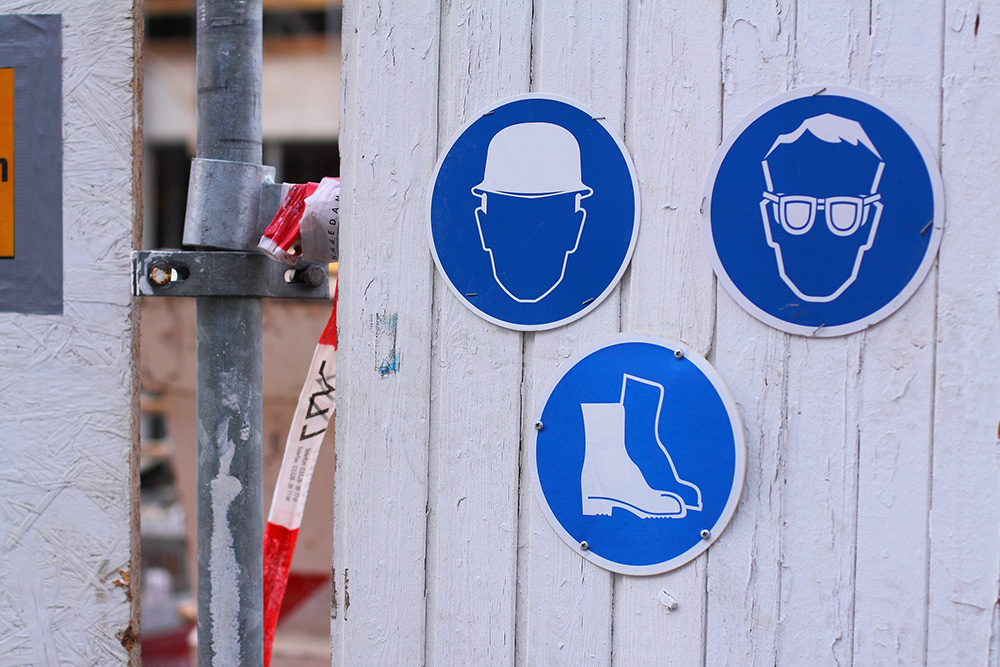NIOSH Reporting on Eye Safety at Work
The National Institute for Occupational Safety and Health (NIOSH) says that eye injuries due to lack of eye safety at work are very common. Everyday in the United States around 2,00 workers will sustain job-related eye injuries that require medical treatment. Experts and doctors believe that wearing the correct eye protection will and can prevent and lessen the severity of 90% of these injuries
Common Eye Injuries
Common eye injuries that occur at work include splashes with grease and chemicals, steam burns, ultraviolet and infrared radiation exposures and debris from things like wood chips or metal particles. Such things can injure the cornea with scrapes and cuts. That’s just a few!
Eye Diseases
Risk of infectious eye diseases occur too! Janitors, healthcare workers, laboratory staff are just some of the workers affected by the risk of infectious eye diseases. They can occur through direct contact with infectious diseases as eye splashes or droplets transmitted through the mucous membranes. Or through coughing, sneezing and wiping eyes with contaminated fingers or other objects.
Most Common Causes
Workers experience eye injuries on the job for two major reasons:
- They were not wearing eye protection.
- They were wearing the wrong kind of protection for the job.
A Bureau of Labor Statistics survey of workers who suffered eye injuries revealed that nearly three out of five were not wearing eye protection at the time of the accident. These workers most often reported that they believed protection was not required for the situation.
OSHA Standards
The Occupational Safety and Health Administration (OSHA) requires workers to use eye and face protection whenever there is a reasonable probability of injury that could be prevented by such equipment. Personal protective eyewear, such as goggles, face shields, safety glasses or full face respirators must be used when an eye hazard exists. The necessary eye protection depends upon the type of hazard, the circumstances of exposure, other protective equipment used and individual vision needs.
For more helpful eye care and vision care tips, please visit our main blog page.
Source: aoa.org


E-mail* You can email the site owner to let them know you were blocked. Please include what you were doing when this page came up and the Cloudflare Ray ID found at the bottom of this page. Antes de começar a apostar dinheiro real no Aviator Estrela Bet , uma excelente maneira de se familiarizar com o jogo é jogá-lo na versão gratuita. These strategies are incredibly useful in online betting games where winning isn’t always easy Пилоту приходится долгое время помощь в кабине пилота, словно требует хорошей физической выносливости. – Antes de começar a apostar dinheiro real no Aviator Estrela Bet , uma excelente maneira de se familiarizar com o jogo é jogá-lo na versão gratuita. These strategies are incredibly useful in online betting games where winning isn’t always easy
https://pumpyoursound.com/u/user/1475693
À procura de um passatempo divertido e potencialmente lucrativo? Se sim, pode tentar a sua mão no Aviator. Esta emocionante actividade combina a excitação do jogo com a possibilidade de ganhar algum dinheiro extra. Para ter sucesso, é importante ter forte perspicácia estratégica nas apostas e saber quando é altura de se afastar. Felizmente, com um pouco de prática e dedicação, pode tornar-se um profissional experiente num instante! Aviator é um crash game desenvolvido com base em RNG (Random Number Generator), uma tecnologia que utiliza algoritmos para gerar sequências aleatórias de números, sem qualquer tipo de padrão. Um desses números será o multiplicador do momento do crash em Aviator. Ou seja, os resultados são totalmente aleatórios e é impossível prever quando o aviãozinho irá voar para longe da tela. No entanto, existem maneiras de aumentar suas chances de sucesso ao jogar Aviator. Vamos conhecer algumas?
The inhibitory effect of tamoxifen on human dermal fibroblast populated collagen lattices buy priligy dapoxetine online I m happy to do the 6 free IUI cycles ont he NHS and then think about IVF privately
Aqui na Lampions Bet Brasil, acreditamos temos o melhor produto do mercado para apostadores esportivos brasileiros e não estamos dispostos a permitir que nossos padrões caiam e corremos o risco de perder nossos valiosos clientes para outros sites. O bandido de um braço só é o favorito entre os usuários de cassinos online atualmente. Não importa o que você queira fazer, com certeza encontrará a máquina certa para você. No entanto, o acesso a essas máquinas nem sempre foi tão fácil. Desde a sua criação, a máquina caça-níqueis passou por uma série de mudanças importantes. Vejamos as origens desse jogo de dinheiro e azar. As apostas ao vivo acrescentam uma camada extra de emoção, com odds atualizadas em tempo real e que refletem o desenrolar das partidas. A interface intuitiva do site oficial da Lampionsbet facilita a navegação e a colocação de apostas durante os eventos, tornando a experiência ao vivo ainda mais envolvente. Juntamente com a variedade da linha de apostas, o site oficial da Lampionsbet consolida-se como uma plataforma completa para quem busca diversão e oportunidades no mundo das apostas desportivas.
https://marrakech.urbeez.com/profil_read.php?Cemogpadark1988
New users can quickly learn how to navigate its features. You must check if your gaming platform supports this app before you start using it. This ensures it works correctly and keeps your gaming experience secure. It guides users through its features so they can participate effectively. The app’s main job is to advise when to cash out by predicting how long the plane will stay in the air, which could increase your potential winnings. Clean (it’s extremely likely that this software program is clean) Introducing original gameplay mechanics in Aviamasters! Change the jet’s speed at your convenience and track the ever-changing flight path. Celebrate your Big, Mega, and Super Mega Wins with a colorful pop-up window when your aircraft successfully lands on the ship, and the total collected multipliers are x20, x40, or x80 in a single round.
The no deposit bonus is offered as an incentive to sign up for real money play. The bonus becomes available the moment you sign up with the casino, even before you make your first deposit. Some casinos make the bonus available immediately and inform you through chat, e-mail, or a pop-up box that appears on your computer mobile device screen. At some casinos you will need to contact customer support to get the bonus activated, and some other casinos may require you to use a bonus code to get started. Online casinos are our passion. We take great pride in the knowledge that our team has accrued over the years. We know what to look for in an excellent South African online casino and what discerning SA players are looking for in a site. When these recommended online casinos offer a promotion that’s worth bringing to your attention, we won’t hesitate adding it to the list. We believe that you should have the latest and most updated information about No Deposit Bonuses in list form so that you can easily find offers that suit you. Try us out!
https://agricahsa.org/better-methods-for-latin-american-bettors/
I confirm that I am over 18 years old and legally allowed to participate in gambling. I have read and agree to the Cookies Policy and Terms & Conditions Another great no deposit offer for MI online casino players is available at DraftKings Casino. The casino welcomes all new players with $25 in bonus funds, and you can get these as soon as you register and verify your account — no strings attached. The typical free bonus you can expect at a social or sweeps casino is free coins bonus. Although it will vary between different casinos, most free online games providers use a ‘coin-based’ system to operate their games and prizes – these coins act as tokens in place of real money, and allow these sites to operate in regions that don’t allow legal online gambling. Get a two for one with DraftKings welcome bonus worth up to $1,000 and a chance at $2,000 worth in casino credits. Exclusive details and promo code